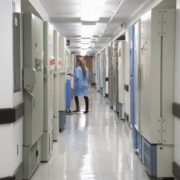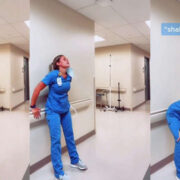Understanding and applying new tech is one of the most important things medical institutions can do in their efforts to prevent avoidable conditions, deliver effective treatments, and enhance patients’ quality of life.
Recent years have seen many new and revisited technologies change the way that healthcare professionals have improved the quality of care and helped patients fight life-altering conditions, and the foundations laid by this tech could have some promising implications for the future.
In this post, we’ll take a closer look at 4 of the technologies that are having the biggest impact on the modern medical industry, and what this could mean in the long term for medical professionals of all kinds.
Patient Monitoring and Virtual Care
One of the most exciting technological developments to emerge in the healthcare sector in recent years is smart pills: electronic devices capable of performing highly advanced diagnostic and monitoring functions, yet are small enough to be ingested the same way a person would take a pill.
These impressive tools were first approved by the FDA in 2017, and are currently only used in select circumstances that require a uniquely granular diagnosis. However, as this tech evolves and proliferates throughout the medical industry, it’s likely that they’ll start being applied to measure the effects of a given treatment, without a healthcare professional ever having to be in the same space as the patient.
Virtual care (or “telehealth”) is another major development which has become especially visible and significant since the outbreak of the Covid-19 pandemic. One report by McKinsey & Company showed that US patient adoption of telehealth leapt from 11% before the outbreak to 46% in 2020.
Though the use of telehealth has stabilized significantly in-line with the impact of Covid, modern contactless card readers are making it easy to accept payment more efficiently whilst combating the spread of viruses and limiting the personal contact during the Covid medical centres.
Bioprinting
Though 3D printing is generally thought of as a tool for prototyping and manufacturing, this tech is seeing an increasing number of uses in the medical industry, such as creating fitted airway stents, prostheses, orthopedic implants, and more.
While these applications are impressive enough, 3D printing tech in medicine is even branching into reforming organic matter for a variety of complex procedures such as bioprinting.
Because traditional stem cells are traditionally grown in 2D culture plates, this limits the potential for them to expand, and renders the overall process more expensive and labor-intensive.
By leveraging the basic idea of 3D printing, however, bioprinting companies have been able to grow complex human tissue structures using more intricate scaffolds, meaning that transplantable organs and tissues such as ears, bones, and skin, can be prepared in much shorter timeframes and facilitate potentially life-changing treatments.
Because of the huge cost associated with 3D printed tissues and their reduced viability for use in transplants, progress is still moving slowly in this exciting frontier. In the meantime, however, the same tech is being used for important research purposes, for example bioprinting eye tissues in order to help medical professionals gain a better understanding of blinding diseases.
AI in Mental Health Treatment
Across the world, mental health issues have become a larger and larger talking point in the healthcare profession, with suicide emerging as one of the leading causes of death for younger age groups.
The social isolation of the Covid-19 pandemic, the overuse of social media, and various other causes have encouraged forward-thinking medical professionals to harness new technologies to better meet their patients’ mental health needs.
Sophisticated AI chatbots such as Woebot are becoming an increasingly popular way for people with mental health issues to practice structured CBT exercises and manage the conditions they suffer from between appointments. Other patient-facing technologies are developing which make use of behavioral cues to inform psychological and social insights, and help mental health professionals understand how their patients and clients are responding to therapy.
It’s also thought that AI could one day be used to help identify chemical changes in the brain, which could indicate the early stages of destructive neurological conditions such as Alzheimer’s and dementia.
Because the outcome of these kinds of conditions depends heavily on early identification, applying AI to check for and understand the condition of a person’s brain chemistry could have a tremendous positive impact on long-term outcomes.
Big Data and Predictive Analysis
Big data has changed the standards of operations and performance in all kinds of industries, and healthcare is no exception.
By collating huge reams of data from EHRs, diagnostic data, insurance documentation, and more, predictive analytics systems can help doctors and other medical professionals understand what kind of conditions their patients are most at risk from, how people might respond to different treatments, and how likely different patients are to stick to their appointments.
One of the most significant impacts that big data has had on the medical industry is the potential to reduce hospital readmissions, thereby improving patients’ comfort, and allowing medical institutions to save significant amounts of time and money.
If, for example, a patient is discharged from hospital, and their family doctor has access to a big data platform which shows the patient’s readmission risk score, the physician could then share this information with the patient and advise them to contact the clinic as soon as certain symptoms appeared. Provided that the patient stays in contact, the doctor could then make adjustments to their medication which would prevent the need for a hospital readmission.
This is just one example of how medical professionals can leverage big data analytics to ensure a more efficient approach to care, providing smoother, less painful recoveries for patients, reducing the costs of readmission, and making administrative tasks far more efficient.
Looking to the Future
Whether you’re a nurse in training or a senior consultant, we hope our look at a rapidly-changing modern medical sector has been interesting and informative.
By finding new ways to measure patient health, and adopting new electronic, mechanical, and biomechanical solutions to old problems, medical professionals across the world can look forward to a future with more efficient processes and better patient outcomes.
















